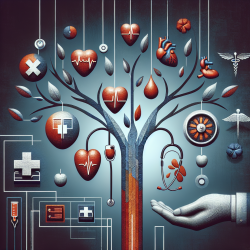Introduction
In the realm of child development and therapy, understanding resilience in children who face adversity, such as parental physical abuse, is crucial. A recent study titled Thriving despite Parental Physical Abuse in Adolescence: A Two-Wave Latent Transition Analysis on Hedonic and Eudaimonic Violence-Resilience Outcome Indicators sheds light on how children can not only survive but thrive despite such challenges. This blog aims to translate these findings into actionable insights for practitioners, encouraging data-driven approaches to foster resilience in children.
Understanding Resilience: Beyond the Surface
The study highlights that resilience is not merely the absence of psychopathology but a multidimensional construct encompassing both hedonic and eudaimonic well-being. Hedonic well-being refers to the feeling good aspect, characterized by high self-esteem and low levels of depression and anxiety. Eudaimonic well-being, on the other hand, involves doing well and functioning positively, marked by high self-determination and self-efficacy.
Key Findings and Their Implications
The research utilized a person-oriented analytical approach to identify four distinct violence-resilience patterns among adolescents who experienced parental physical abuse. These patterns were resilient, troubled, vulnerable, and non-resilient. Understanding these patterns is vital for practitioners as it allows for tailored interventions that address the specific needs of each group.
- Resilient Group: These adolescents exhibit high levels of both hedonic and eudaimonic well-being. Interventions should focus on maintaining and enhancing these strengths.
- Troubled Group: Characterized by low self-esteem and high aggression, this group requires interventions that build self-efficacy and reduce aggressive tendencies.
- Vulnerable Group: With high self-esteem but also high levels of depression and aggression, these adolescents benefit from support that addresses their emotional regulation and social skills.
- Non-Resilient Group: Exhibiting low levels of both hedonic and eudaimonic well-being, comprehensive interventions are needed to address both emotional and behavioral challenges.
Practical Applications for Practitioners
For practitioners, these insights underscore the importance of adopting a holistic approach to therapy. Here are some strategies to consider:
- Individualized Assessments: Conduct thorough assessments to identify the specific resilience pattern of each child, guiding targeted interventions.
- Strength-Based Interventions: Focus on enhancing existing strengths while addressing areas of vulnerability.
- Collaborative Approaches: Engage families, schools, and communities in the therapeutic process to create supportive environments for children.
- Continuous Monitoring: Regularly assess the progress of interventions and adjust strategies as needed to ensure positive outcomes.
Encouraging Further Research
While this study provides valuable insights, it also opens the door for further research. Practitioners are encouraged to explore how these resilience patterns manifest in different cultural contexts and how interventions can be adapted accordingly. Additionally, investigating the long-term impacts of these interventions on children's development can provide deeper understanding and refinement of therapeutic practices.
Conclusion
Understanding and fostering resilience in children who have experienced parental physical abuse is a complex but essential task. By leveraging data-driven insights and adopting a holistic approach, practitioners can empower these children to transform their challenges into triumphs. For a deeper dive into the research, I highly recommend reading the original study.
To read the original research paper, please follow this link: Thriving despite Parental Physical Abuse in Adolescence: A Two-Wave Latent Transition Analysis on Hedonic and Eudaimonic Violence-Resilience Outcome Indicators.










